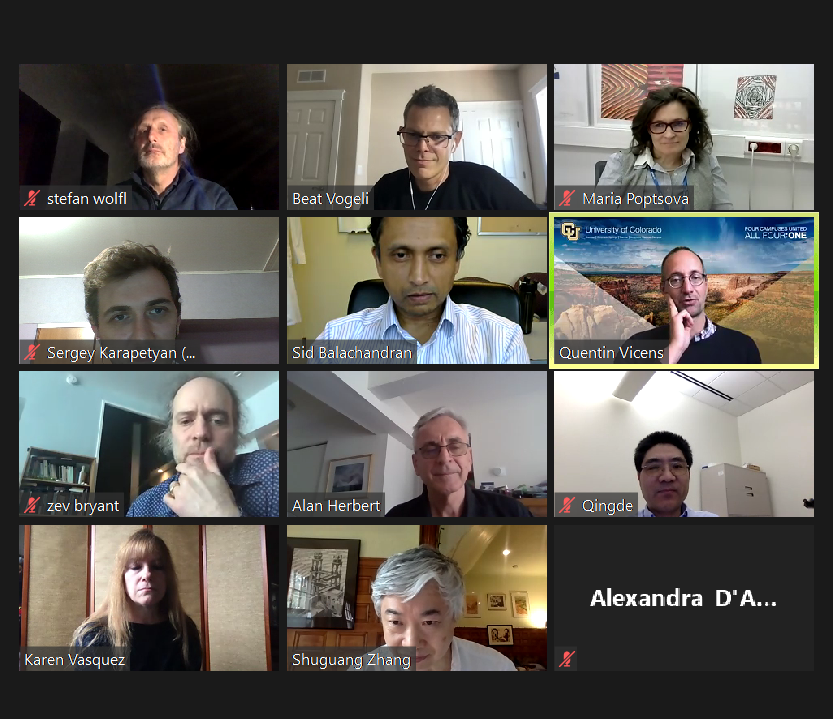ABZ 2021 Meeting: A, B and Z: The Structure, Function and Genetics of Z-DNA and Z-RNA

The ABZ 2021 Meeting was held virtually on May 19, 2021. The first of its kind, this international conference gathered more than 200 scientists from 24 countries. Participating were researchers in genetics, molecular biology, chemistry and biochemistry, immunology, structural and cell biology, and machine learning. The meeting was organised conjointly by the Faculty of Computer Science, Molecules (an open access journal by MDPI), RNA Society, International Journal of Molecular Sciences, and InsideOutBio.
The meeting addressed progress in research involving Z-DNA and Z-RNA. These high energy left-handed conformers of B-DNA and A-RNA are associated with biological functions and disease outcomes, as evidenced from both human and mouse genetic studies.
These alternative structures, that form under physiological conditions, called flipons, regulate type I interferon responses and induce necroptosis during viral infection. They can also stimulate genetic instability, resulting in adaptive evolution and diseases such as cancer.
Historically, the biological role of alternative nucleic acid structures has been controversial, especially for Z-DNA. It required new approaches to identify structure-specific proteins that recognized the left-handed conformation and genetic studies to characterize the effects of variants on phenotypes. These advances were informed by biochemical, structural, and biophysical approaches that established the conditions necessary to flip from the right-handed to left-handed conformation.
A total of eighteen speakers presented in three main sessions, with a deliberate focus on presenting unpublished data.
Based on presentations by Yukio Kawahara, Alan Herbert, Tony Sun, and Qingde Wang, the key role of ADAR1 p150, which contains the Z-DNA and Z-RNA binding Zα domain in regulating type I interferon responses in both human and mice is now beyond doubt. Also, the key role of the related Z-DNA binding protein 1(ZBP1) in the inflammatory cell death called ‘necroptosis’ during infections such as vaccinia (Bert Jacobs and Ed Mocarski) and influenza (Sid Balachandran and Thiru Kanneganti) is also clearly established.
Manolis Pasparakis presented genetic models identifying pathways in which endogenous ZBP1 dsRNA substrates are associated with disease outcomes in the gut and the skin. Other labs (Jon Maelfait, Jan Rehwinkel, and Andrew Oberst) presented studies from genetically modified mouse models to examine the interactions between ZBP1, MDA5, and ADAR1 and their outcomes, in particular live births.
Maria Poptsova presented computational approaches based on the DeepZ machine learning algorithm to study factors that alter the B -> Z flip energetics in vivo and to describe the pathways involved. Structural studies on Z-RNA formation by Quentin Vicens and Beat Vögeli outlined some of the different requirements for Z-RNA formation compared to Z-DNA formation, pointing at a widespread distribution of Z-RNA across transcriptomes. Other elegant single-molecule studies were present by Seok-Cheol Hong and Zev Bryant, providing precise details for the flip from right-handed to left-handed structures and how these approaches enable future studies of the molecular machines involved in these processes.
The evolutionary roles of simple repeat sequences that adopt different conformations under physiological conditions, called ‘flipons’, was presented by Alan Herbert. Karen Vasquez examined the mechanistic processing of mutagenic H-DNA and Z-DNA by DNA repair proteins that maintain genomic integrity.
The breakout rooms proved a great success allowing many colleagues who have contributed to the field over the years to reconnect and exchange recollections with those new to this endeavour. Tom Jovin, Ron Hill, Shuguang Zhang and Horace Drew anchored the historical discussion, with Guliang Wang, Cat Musselman, and Heather Koehler moderating rooms focusing on the structure, biology and genetics of all things Z.
